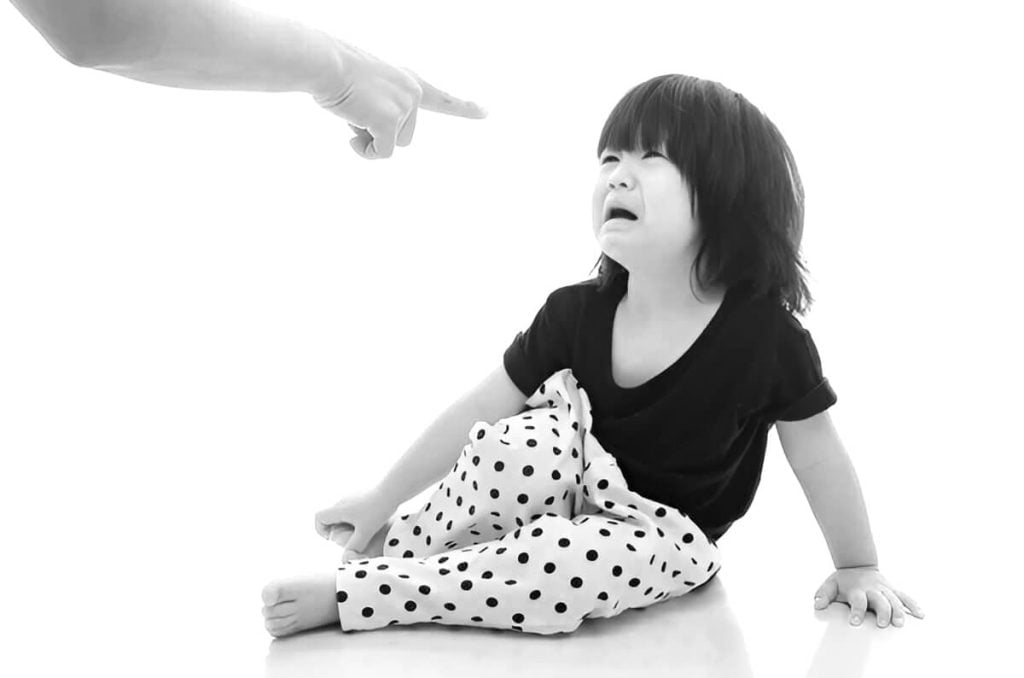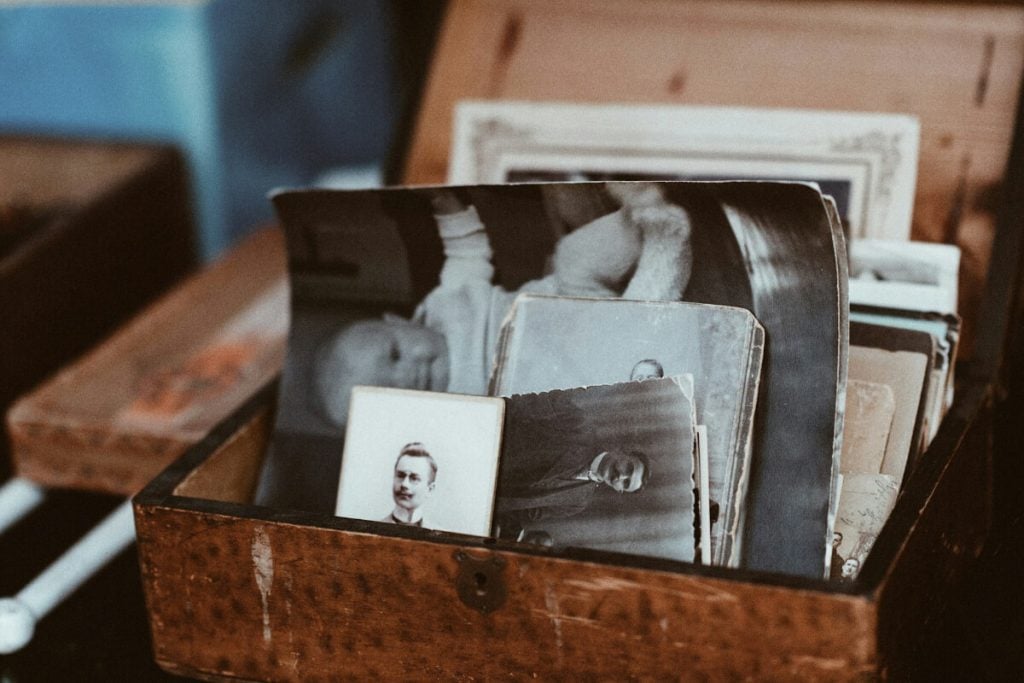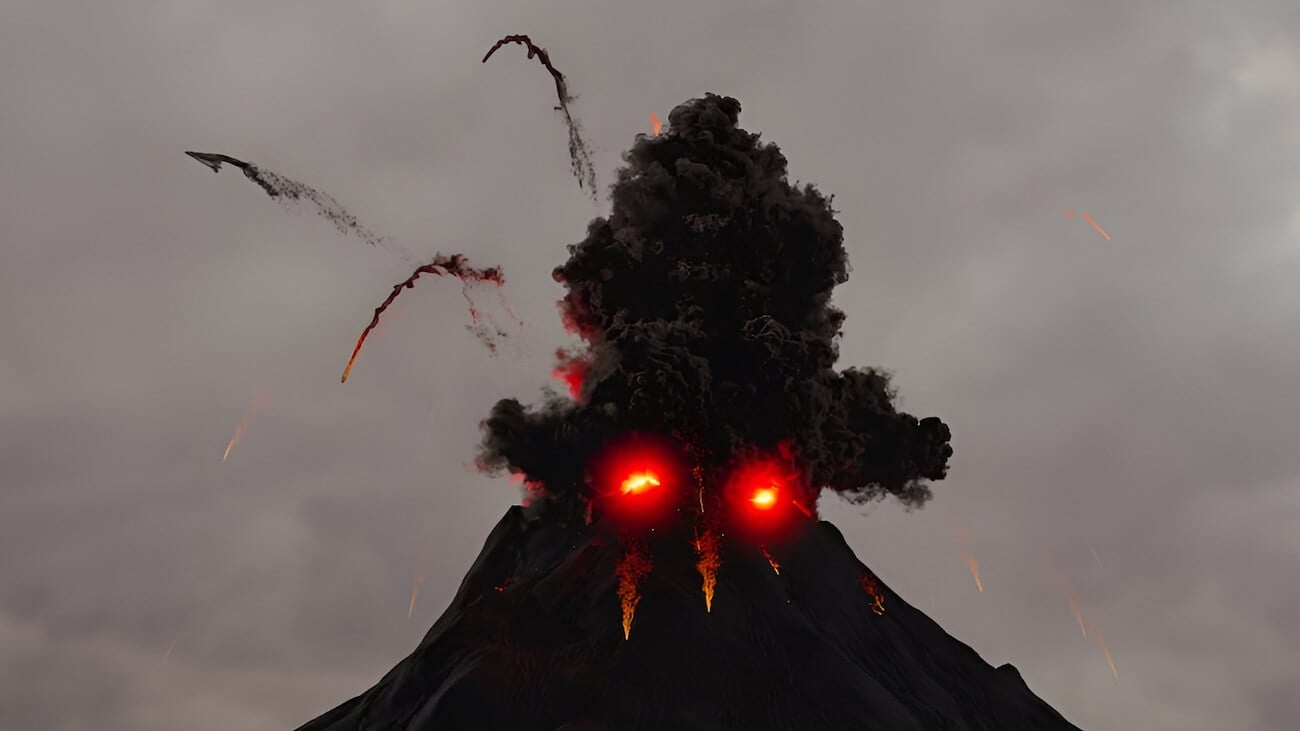This article was written with love by hand, not by AI.
People come for past life regression sessions for various reasons: to solve a present day problem, to unravel their connection with an individual, to find out who they were or what they did in their previous life, or to explore.
Sarah wanted to explore a past life out of curiosity after reading about the subject.
I’ve been doing past life work for several years. As with anything metaphysical, I ready myself to “expect the unexpected” from the get go. However, most of the sessions I conduct are rather ordinary, which the famous regression therapist Dolores Cannon calls “digging potatoes” lives.
Sarah’s session felt like that at the start. Suddenly, in the middle of the session, a weird natural disaster, or should I say, a strange natural phenomenon, reared its head that made my ears perk up.
A village painted in shades of grey
At the end of the hypnotic induction, she descended from the cloud and found herself in a village.
Sarah: I see a village where it seems like everything is grey. Some things are red. It's not a very bright red. It's more of a red with a filter of grey over it. Like a dusty sort of red.
Eugene: Where do you see yourself? In the middle of the village, on the outside of the village?
S: I'm now in one of the lanes of the village. There’re houses on both sides of this lane. The road, it's not really a road. It's more like very dusty and sandy. And everything is grey.

It’s curious that the scene is in grey so I make a note of it. Later on, the explanation will present itself.
The questions I ask may seem insignificant, but they help anchor the subject in the past. If the trance is too light, the subject may jump lifetimes or slip in and out of hypnosis. These symptoms are undesirable in a session.
One of the ways to anchor the client is to ask is what she’s wearing.
E: Let's get some additional information. I want you to look at your feet and tell me if you're wearing anything.
S: No, no.
E: Barefooted. And how about your lower body? You're wearing pants? Skirt, dress or something?
S: Wearing loose pants.
E: Loose pants. What colour?
S: Grey.
E: How about your top?
S: I’m wearing a top. Also grey.
E: And now look at your arms. Do they look feminine or masculine?
S: They look skinny. Like maybe feminine.
E: Does it feel like you're wearing anything on the head?
S: No.
Next, I proceed to ask about her environment.
E: Let's move forward. So you're on a lane in the village. Is it a narrow or is it a wide lane?
S: It's about maybe three to four meters.
E: Is there anyone? Do you see other individuals?
S: For some reason before I landed I thought there were people, but now that I've landed, I don't see anybody.
E: Can you describe how the structures look like? Are you next to a house or is it a shop or is it something else?
S: They are wooden houses. It looks like people do sell stuff out of these houses because it's quite far back in time. But you wouldn't call them shops. More of just houses.
E: And what are they made of?
S: Wood. The roof has those. I don't know what to call them, but those are plates. It's not ceramic, it's not brick. It's those sheet, like materials.
E: Sheet? Like metal?
S: Perhaps a thin metal.
E: And what else do you see? Do you see any equipment or any accessories apart from the houses? What else do you see along that lane?
S: I see pots and pans hanging from the houses and there're some hooks. I see floor mats, shoes.
E: Describe the shoes to me.
S: They're like sandals.
When colour returned to the world
By this time, I feel she’s gone deep enough into the trance with the rapid questioning. I move her to the next scene.
E: Now allow the mind to move forward in time to the next important moment. And tell me what impressions come to you.
S: So I'm now walking in the lane. It's on a slight slope, so I'm walking up. I guess I'm wondering why it's so deserted, where everybody has gone, and why it's so quiet.
E: So what's the impression that you get when I ask you where is this village situated? Like in a forest, in a mountain or on a plateau, in the city or something?
S: I don't really know. Like I don't see any nature around. I don't see any natural landscapes. Everything is just grey. Even the sky.
E: Even the sky is grey?
S: Everything is grey. It almost feels like the whole village was deserted very suddenly, very quickly. But it's strange because there's no signs of demolition. There's no sign of people evacuating in a hurry. It's almost as if everybody just vanished.
E: Alright. Did you actually live here or you just found this village? As in you're exploring the area. What does it feel to you?
S: Yeah, it feels like I lived here.
A great deal of information can be gleaned from exploring their place of residence. We can find out who the past life personality’s parents are, what they did for a living, and how the relationship was like. The latter often gives important insights that guide me in helping the client appropriately.

E: So go to the moment where you're in your house. Just move forward or backwards in time, whatever is appropriate to a moment where you're in your house. Tell me the first impression.
S: There is actually colour.
S: I'm sitting on the floor and the floor is made of wood, like a brown colour. It's a one room house. Like actually there's no bedrooms. You walk into the house and that's the open space. I'm sitting on the floor quite young, playing with some toys. There's a bucket. And then I think there's an older lady. Maybe she's my mom, but she's cooking something close to one of the edges of the house, which is still the same room because it's one room.
S: She's probably like a few meters away from me. She's cooking.
Sarah is surprised to see colour, after watching all the previous scenes in grey. She likely went back in time to when the colours in the village were vivid, not grey.
A young child startles his mother
The best past life sessions normally happen when the client associates with the past personality, watching the scene in first person. I ask from what perspective she is observing this.
E: I just want to check. Do you see yourself in first-person or third-person?
S: Third person.
E: Can you try to be in the shoes of your younger self, see everything in first-person? Does it work for you?
S: Okay.
E: Watch everything in first-person. Think her thoughts, feel her feelings, hear the sounds that she hears, see what she sees and so on. What are you playing?
S: I actually… I don't know if this younger self now is female, but for some reason I feel like might be male. I don't know what changed.
Such confusion happens because the impressions at the start of a session can be vague. With this new information, I start referring to the protagonist as a boy.
E: Let's explore. What gives you this impression? Is it the look?
S: Yeah. I never felt like this younger self had long hair, like short hair. Not to say that females can't have short hair, but just I think that's one sign. And then also just the general. I guess, the sensation in the figure.
Sarah explained that the “sensation in the figure” told her it’s a boy. This is a clue that she’s deeply associated with the boy, feeling his feelings, and reliving the past in first person. This is ideal in a session.
E: So what are you playing now?
S: I'm playing with a bucket and some wooden figurines.
E: By yourself?
S: Yep.
E: And mum is cooking a meal?
S: Yep.
E: Anyone else you see around you?
S: No.
E: No? Okay. Just slowly move forward in time and tell me when something significant happens in the same scene. Maybe mum calls you for lunch. Let's explore this particular scene fully. Is this afternoon time or is it morning time early in the day or late in the day?
S: I think It's around mid-afternoon.
E: Mid-afternoon. So that means she's cooking there.
S: Yeah.
E: So just slowly move forward to dinner time and tell me what impressions you get. Did anything happen from mid-afternoon to dinner time?
S: I see myself trying to get her attention. I'm playing with the toys, but then at some point I like crawl towards her and she's got her back facing to me because she's cooking on the counter. And then I think I tug her leg or like touch her leg.
S: But she’s not very happy about it.
E: How does she express that?
S: She gets startled. I think she was chopping something and then she got startled and she turned around. I don't think she meant to hurt me, but she threw the knife on the floor. Then the knife got stuck in the floor because it was made of wood.
E: The knife didn't hit you?
S: No.
E: How do you respond?
S: I'm shocked. I don't really know what to do.
E: Did she say anything to you?
S: I know she shouts at me, but I don't know what she's saying.
E: You don't know what she's saying? As in you hear unintelligible words?
S: I can see her mouth moving and she's shouting. But for those moments after she just threw the knife, it's like I don't hear anything. I just see.
E: You just see? Okay.
S: Yeah. And then everything starts to turn grey.
E: Everything starts to turn grey. Okay, so then what do you go on to do?
S: I think after that I quickly get out of her way and I scramble upstairs.
E: Oh, so there's a second level?
S: Yeah.
E: You scramble upstairs too?
S: I guess you could call it a second floor, but it's not very big. I scrambled upstairs, and I just crawled into my bed and tucked the blanket around me.
E: Let's move forward to meal time on the same day and tell me what impressions you get.
S: It's very quiet, like we're eating. But I don't think she's very happy with me. She's feeding me, like putting food on my plate, but I don't think there's much conversation.
E: How do you know she's not happy with you? What makes you think that way.
S: She's not looking at me. She's not trying to talk to me.
E: Is it just you and mum?
S: Yep.
E: And where do you feel dad is or whoever else is supposed to be in the house?
S: I was told that dad was at work. He does like an outdoors manual sort of job, but for some reason he's not there. And I feel like I did ask mum about it, but she just told me to eat and basically tried to stop me from asking.
E: So mum doesn't want you to talk much. Just eat.
S: Yeah.
Exploring mealtime helps me learn about the family dynamics. I make a note when one or both parents mistreats them, because past life trauma can affect the client today.
Fire strikes the village
Things start to get interesting in the next scene.
E: Slowly move forward in time on the same day and tell me what's the next significant thing that happens.
S: So that evening I'm back upstairs in my bed, and suddenly I hear shouting. There's something going on. I see red.
S: I look out my window and from where I'm lying or sitting in bed and I hear the shouting. And I look in the direction of the shouting and there's this red colour. I think it's fire.
E: How does mum react?
S: At this point, she's still downstairs. We both hear the shouting from outside. I don't know if she sees the fire, but I see the fire. But anyway, she shouts for me to come down. And I can tell it's hurried, like we need to get out.
S: The fire is in the distance. It's not near my house.
E: Do you hear how she calls you?
S: I don't know what she's saying. I can't figure out the exact words, but I know that she sounds alarmed.
E: All right, so as you're looking at mom, tell me about her features.
S: She is quite slim. She has shoulder length hair. She looks like she's maybe in her 30s, like late 30s.
E: How about the hair and the skin tone?
S: She's got black hair. Skin tone. She looks Asian, but she looks like she's been under the sun slightly. So a bit browner of a colour.
E: All right. So you see the fire, the shouting, and mum asks you to hurry out of the house.
S: Yeah.
E: And what happens with the fire?
S: I don't exactly see what happened to the fire because we get out of the house and we start running in the opposite direction. But I feel it getting closer, like encroaching. And I see other people, our neighbours, also running away from it.
E: Where do you want to run to? Is there a place where you gather?
S: I have a sense that I didn't actually make it.
With a looming disaster and a remark like this tells me that the end is near. I prepare to explore the end scene.

E: You didn't make it?
S: Like I didn't make it very far or I didn't make it to where they all were running to. I think I tripped and I fell.
E: All right, so stay in the moment where you tripped and fell. Tripped and fell over what?
S: The road was a bit uneven and I tripped over that.
E: Mum doesn't run with you? She isn't holding your hand?
S: She was holding my hand. Running slightly in front of me. But when I trip, she doesn't fall down as well, but she stops and she looks.
E: At you?
S: Yeah, because I fell down and she was wondering what happened. She looks back and looked like she wanted to help me up. But whatever was encroaching, it might have been fire because at this point, my vision is starting to get blurry. Like there's a smoke.
S: So she noticed that I fell down, looks back, and I can see that she contemplates whether to help me out. But as the smoke starts to fill this space, I see that she just continued running.
E: All right, now what do you see around you then?
S: A lot of smoke.
E: A lot of smoke and people running as well?
S: Yeah.
S: But at this point, most of them have already gone ahead.
E: Go through this moment slowly. What do you do next?
S: For some reason, I don't get up. I just lie there. And the smoke just starts to fill the space even more.
E: So as you're lying there, what are the thoughts running through your mind? How are you feeling?
S: Some part of me is sad that I'm being left behind. Some part of me is also scared. But there is a lot of just acceptance, and wishing that I was not being left behind. But at the same time being willing to accept that I have been left behind and that if I'm gonna die, then I'm gonna die.
E: So just slowly move forward in time and tell me if that actually happens. Step by step, move forward in time.
S: Yeah, I think I do die.
Very quickly, the boy is at his dying moment. It’s important to get the dying thoughts and feelings because they shape the client’s present day personality.
E: Alright. Go to the very last moment, whenever that is, and just for the last time, look around you and tell me, what do you see?
S: The smoke has gone very thick. So it's like black.
S: I don't know if it makes sense, but it feels like I'm melting.
E: You're melting?
S: Yeah, into the ground. Like, I'm not burning, I'm not on fire, but my body is melting. Like how tar on the road melts. I'm melting and my body is becoming this black figure that's just melting.
E: So go to the last moment, take your last breath and leave your body. Out, out, out. Any symptoms that you faced back then will not affect you. Turn around at a distance above your body. Take a look and observe what is happening. From a bird's eye view, what do you see?
When the past life personality dies, they can often observe what goes on after their death. In Eastern religions, we believe that the soul lingers in the physical realm for a few days after death, sometimes unaware of their death. Hence, we perform the last rites over a few days to inform the departed soul of their passing.
The smoke that devoured people
At this point, the story starts to look like Stranger Things. Is there a monster? Is this the work of an elemental? I had to think creatively to investigate an unconventional “crime scene”.

S: I see that there is that black smoke or black something, and it's started to fill the rest of the village in almost in a smooth circle, like manner.
E: Circle like manner?
S: Yeah, like where the fire first originated, it started to expand its radius. That was how I died. And then after that, it just continued to expand its radius until the whole village turned black.
E: So was the village razed by the fire or was it just engulfed by smoke?
S: Just engulfed by the smoke at this point. I don't know at what point, but there was no longer red. Like at the moment that I died, it was just black. I believe at that point in time there was also no more red, no more fire. I don't even know what the black stuff is. It's just like smoke or like some sort of cloud or gas or something.
S: But basically it's just taking over the whole village.
E: Okay, it's taken over the whole village. Now as you are above the body, are you able to see your physical body?
S: I can't see it because everything is covered in the black stuff. But I know where it is.
E: Now just allow time to pass as you're watching the scene move forward a little bit faster. Are you able to see what happens after the fire, after the smoke dissipates?
S: It starts to clear up from where it first started. And then in the same radius-like fashion, the black smoke starts to disappear. Actually, the whole village is the same. It's back to that grey scene. Everything is grey. Some things are red, but most things are grey.
E: Okay.
S: There's no sign of destruction, but there's no people where my body was. It's also not there.
E: So it literally melted into the ground.
S: Yeah.
S: Oh, one thing to mention is in the previous scene, where I was melting into the ground. I felt like there was some sort of target in the back of my head.
E: Target? What does it mean?
S: Like there was a special black hole or indentation there.
S: But it didn't hurt. I just knew that there was maybe some black substance had planted itself on the back of my head.
E: Did this cause you to fall or cause your death?
S: No, I fell purely because I tripped over the ground.
S: But I started to feel the presence of that black spot on the back of my head as the black smoke started to come over me. In terms of the melting, I started to melt from my feet because that was where the smoke started to hit me first.
E: This sounds like a very unusual smoke because smoke doesn't melt the body.
S: Yeah. So I don't really know what the substance is.
E: Okay, so do you see where the rest have run off to? All the villagers and your mum, you are able to pinpoint from your bird's eye view.
S: In my bird's eye view, I see that they ran off to someplace else. My vision from this bird's eye view is limited to a circle. And within this circle, it's the village. I see that they ran, ran, ran until past that circle. So I don't know where they went to, if they still alive or not, because I can't see.
E: So from the point of view, you see the village as a perfect circle?
S: I don't think the village is a circle, but I can only see a certain circle.
E: Okay, so let's find out for closure. Let's find out where your mum has gone to and whether she's alive and she's okay. And you'll be able to get these impressions as a soul. Allow your mind to drift to where she is and get impressions on her whereabouts, whether she managed to escape. What impressions do you get?
S: I sense that she managed to escape. I see the desolate desert.
S: And she's wrapped up in some white robe. But this desert is like… I don't see any buildings. I just see one tiny tree. And she's walking up the desert slope towards that tree. She's by herself, but she's carrying another baby in her arms and that's it.
Seeing how his loved ones lived their lives after death can bring some past life connections to a closure.
The toddler years of a short life
The quotidian hypnotherapy session is rarely a smooth process where exploration of the past or present life happens in a chronological fashion.
Many people, including I, went for past life sessions after reading Brian Weiss’ books. If you’re a Weiss fan, put your preconceived notions aside. What you’re reading is the actual sequence of a typical session: back, forth, u-turn, repeat.
At this juncture, the boy’s life is unclear to me because the story had unexpectedly fast-forwarded to the end. I rewound the cassette tape to learn more about the boy’s life.
E: Okay, so let's now go back. Allow your mind to drift back to when you're sitting on the floor in the house. Once you're there, let me know.
S: Okay.
E: Now, this time, let's go back to a very important moment prior to this to get the full story of why this happened. What impressions are you getting?
S: I see that I'm even younger. I am outside that same house, and I am crawling. I'm crawling on that lane. It's the same lane that I previously landed on. And so, just as I was walking uphill, I'm also crawling in that uphill direction, and I'm outside my house, crawling up on the general area outside my house.
S: And I see my mom. She's standing in the doorway. She's looking at me and she's smiling.
S: And I see my dad also there, also in the doorway. And they're both looking at me and smiling.
E: Tell me your dad's features.
S: He's also quite slim. He's strong. He's pretty tanned. He's got a full head of hair. He's slightly taller than mom; they're both pretty tall, but dad’s taller.
E: So let's see what happens that day when you're even younger. So you crawl to mum and dad, and what do they do?
S: And they're both happy. Then dad picks me up.
S: And he just holds me.
E: How does it feel like to you?
S: Feels very warm. I'm happy.
E: Where does he bring you to?
S: I don't really know. Like, the scene kind of ends there where he's picked me up and he's cradling me. And mum's also there. They're both happy and smiling, so the scene ends there.

It looks like he had a happy toddler-hood. Since the scene ends there, I move her to the next moment. Exploring important moments helps because they give me a sense of how well the life was lived.
By this time, I figured that Sarah is highly visual because her descriptions were vivid and detailed. This is a desirable, yet rare ability, because many people get vague impressions. I use this opportunity to get as much information as possible.
A mother’s hidden cruelty
E: Now go on to the next important moment after this scene that will better explain this lifetime to you. Let the impressions come to you.
S: I'm sitting at the dining table. The dining table is basically just a very low wooden table with cushions for seats.
The table sounds rather Japanese in style.
I probed about the father since it’s the first time she mentioned him.
S: I have items in both of my hands. I think they are fake knives or something. Like, they are short blades but not very sharp.
E: Toy knives?
S: Yeah.
E: Do they look like kitchen knives or the combat knives?
S: They look like knives that some people use for cutting fruit. Like they're just quite small.
E: Right. So, utility knives.
S: Yeah. And I have one in each hand and I'm just kind of like playing with them, like stabbing them into the dining table, which is also made of wood. But I'm not doing it angrily, I'm doing it because I think it's fun.
E: Are you playing with someone?
S: No. It's a scene where mum is cooking. It's also mid-afternoon and I can see that dad is coming in and out of the house.
E: What does he look like he's doing?
S: He looks like he's working. Like doing the manual labour sort of work. He's probably fetching something from the house before he continues going out.
E: Do you see him holding anything in his hands?
S: I think he's holding a small axe.
E: So mum and dad leave you at the table playing the toy knives, while mum is cooking and dad is working.
S: Yeah.
E: And then what happens next?
S: Dad has gone out of the house. I think he came into the house to fetch the axe. So he's left the house. And then I think mum turns around from her cooking and then she sees that I'm damaging the table with the knives. She's quite angry. I think she comes over and then she's quite upset, obviously. She takes both of my hands and my hands are still holding the knives. And then she takes my hands and pulls me back so that I fall onto my back. And then she's holding my hands and she stabs the knives into the ground.
E: So she's quite rough.
S: Yeah, she was quite upset.
E: And how do you respond?
S: Shocked. I didn't expect her to react in that way.

I move her to another significant moment to learn more about the boy’s childhood and to get a complete picture of the past life.
As you can see, I only bring her to key moments. It is up to the subconscious mind to decide what is important. Usually, they are usually very pleasant moments or very unpleasant ones.
The debt that haunts the family
A new character, the loanshark, enters the scene.
E: Alright. One more time, move to the next significant moment and tell me the first impressions that you get.
S: I see that at another point in time I am walking up the same slope outside my house. I think dad is coming down towards the house as well, but in the opposite direction. So he's coming downhill. I'm walking uphill.
S: And then mum is at the door about to greet him coming back home. And then I see a man. Suddenly it's like, he's not trying to arrest my dad, but he grabs my dad's hands behind his back. He has a knife and he's like, pointing it towards the back of my dad's neck. I think he shouts at my dad like he's wanting something. And then mum and dad went quickly from being happy to see each other, to quite shocked and scared. And I don't really know what to do. The man is clearly demanding something.
E: Can you hear him saying anything? What does he say as he sticks the knife at dad's neck?
S: I think he's asking for money, as if my dad needed to pay him back something.
E: How does dad react?
S: He's very scared. I think he has to appease the man by saying something like, he'll pay him back the money soon. But I can sense that, as he says that, there's also a tone of inside injustice. I know that my dad is a fair man, like he will pay back whatever is due. But for some reason, I feel like he feels injustice as well.
E: What does the man go on to do?
S: He lets my dad off. So he doesn't hurt my dad or anything. He's angry, but he accepts it. And then he walks away. But he shouts at my dad, taunting him to say, to just remind him that he needs to be paid back.

It sounded like the family struggled to make ends meet so his father borrowed money to support the family.
Pushed down the stairs by mum
By this time, I thought I had formed a clear picture of the family dynamics. The next scene came as a surprise and changed everything.
E: Okay. Now allow the mind to drift forward to the most important moment in this lifetime. This lifetime as a boy with mum and dad.
S: I see this other point in time. I don't know if it's the most important moment, but it's another point in time that's popped up. I see that I'm upstairs in the house and it's nighttime. So I'm sleeping in my bed. And mum and dad are sleeping in their bed. And then for some reason, I get up and I walk. And then I see mum has also gotten up. Dad's still sleeping, but mum has gotten up. And then she pushes me down the stairs. For no reason.
S: And then, I tumbled to the bottom of the stairs. And then she looks for a second from where she is at the top of the stairs, and then she goes back to bed. I can tell she's angry, but she doesn't shout or do anything. She just pushed me downstairs.
E: Are you badly hurt?
S: I have bruises, but I haven't broken anything. I'm still fine.
S: I think I hit my head right at the bottom of the stairs. Because I think the stairs, they kind of start at one of the corners of the house. And in that corner we have a cabinet or some sort of shelf. And then I think as I rolled down right at the bottom, I hit my head on that shelf. But it's not like a terrible injury. It's just that you feel that buzzing sensation.
E: How do you feel about what just happened?
S: I feel the same way as I did at the scene where I died. Being a bit scared, being a bit sad, but being also confused at this point in time. That's one difference. In the scene where I died, I didn't feel confused, but in this scene I feel confused.
S: So I'm a bit confused. But I also accept what has just happened to me, that I was pushed down the stairs.

It’s abnormal for mothers to do this to their child, so I probe further, wondering if the child had done something bad enough to tick the mother off this badly.
If you have been wondering why my sentences are in the present tense, rest assured, my grammar isn’t broken. I do this to keep them “present” or anchored in the past life as they relive it. The aim is to prevent them from jumping out of the scene. Language, and the client’s ability to comprehend the subtleties, plays a big role in hypnotherapy.
But I have to admit that the switching between tenses can mess with my mind.
Tracing the roots of the mother’s anger
Now I try to find out why his mother’s attitude changed.
E: Let's go backwards a little bit and find out. What is mum angry about? Why does she rough handle you like this? What impressions do you get? What do you do that made her angry?
S: I don't. No. I can't see a scene where I did anything wrong, but I think there was a scene in between the scene where dad was cradling me, and the scene where mum took the two knives and rolled me on my back and then pushed the knives into the ground.
S: I see a scene where it was at night and I think mum and dad were arguing upstairs. I don't know exactly what they were arguing about. And I sensed that mum was never the same again after that. Like some sort of switch had flipped in her head.
E: Never the same in what sense?
S: Mentally, she just became more angry.
E: So before that she treated you nicely?
S: Before that she was fine.
E: Afterwards, she got a lot more angry and more irritable?
S: Yeah.
E: Because of that, you triggered her a lot?
S: Yeah.
E: And get a gist of how she treated you afterwards. Just get some impressions of how she treated you. The way she talked to you.
S: Short-tempered. I felt like I was a burden to her. Felt like maybe she didn't want me anymore.
E: And how about dad? Did his attitude towards you change?
S: No. He was still the same.
E: Do you feel that he's aware that she treated you differently?
S: No, because she would only treat me in that new way when he wasn't around.
E: Does she drop any hints of why she treated you differently?
S: No.
E: This might explain why she felt okay with leaving you behind then.
S: Yeah.
S: I think it's also strange because after that argument, the way she treated me changed. But the way she treated my dad didn't change. It was still the same. So the only thing that changed was the way she treated me when dad wasn't looking.
The family had happy and unhappy moments, which is normal. When mother transformed into an angry person, she vented her frustration on her son. The story felt cohesive, which is a factor that helps me decide if the session was a real past life.
I was ready to move on from exploring the family, because I had enough information on hand to help Sarah.
The black mark that signalled death
I return to the boy’s last day of life once more. This time, I wanted a clearer picture of the source of the smoke and what this unnatural disaster was.
E: Alright. Now one more time, allow your mind to drift to the very last moment in your life where you're lying on the ground accepting what's going to happen and the smoke is engulfing you. Now let's find out more about this black thing that's lodged in at the back of your head. Go to the moment where this actually happens. And now I just want you to observe as a third person, and you get plenty of clarity of what is happening there. Just freeze the moment where the black thing gets lodged at the back of your head. And from a detached perspective, tell me, what do you see?
S: You know when someone who's smoking takes their cigarette and they want to put it out? They might put it into like a paper or something or like whatever that they use to defuse the cigarette. Then it leaves a black mark. It feels like that. It's like a small circle on the back of my neck.
E: On the neck? So it's not the head?
S: Oh yeah. It's that part in between your neck and head.
E: Right. In between the neck and the head. And does it spontaneously occur or do you feel someone or something put it there?
S: I don't feel anybody putting it there. It just happens.
S: It's the same part of my neck head that got hurt when mum pushed me down the stairs. Except that in that scene it was like the furniture that hit it. But in this scene, that small circle just appeared.
E: So it spontaneously appeared?
S: Yep.
E: And then something oozed out?
S: No, in that scene where I was dying, the black smoke is coming from behind me. I start to melt from my feet.
S: At the same time that black mark starts to appear on the back of my head/neck. It doesn't do anything spectacular. But as my body starts to melt from bottom up, that mark on my head or neck, I think it gives off a bit of smoke. Like in the same way that someone who's smoking a cigarette will put it out.
S: It's not anything spectacular. It's there, and I can feel that it's there.
E: Okay. As you're observing this scene as a third person, the final moments, just allow yourself to be magnetised to the source of the smoke, possibly where you first saw the red colour, the fire. Get an impression of what actually happened. What caused this smoke that is so unusual that it could melt you?
S: I think it was a natural disaster, but not a natural disaster that we know of in today's world. I think it was one of those things where it's almost like a spiritual myth, like something was brewing in the ground, and then at that point in time, it decided to come up and present itself as that smoke or the fire.
E: Does it look like a normal fire to you?
S: No.
E: Tell me, what are your impressions?
S: It moves very fast. It's the fire. I guess when you think of fire, you think of red, but the red only presented itself for a short period of time before it turned into black. So almost like a black smoke?
E: It was a red thing for a flash?
S: Only for a few seconds.
E: For a few seconds. And then a lot of black smoke emanated from it, whatever it is.
S: Yeah.
S: And it started to take over and move quickly.
E: Does it come out from the ground?
S: Yeah. But as it starts to move quickly and intensify, you don't really see the source anymore. You just see it spreading out in a radius.
E: And this smoke doesn't cause any physical damage to the buildings?
S: No, no.
E: So it only consumes the beings?
S: Yeah. But interestingly, you also don't feel like you're choking when the smoke comes to you. I didn't feel like I was choking when I was dying. It just melting.
E: Just melting.
S: Yeah. But it also wasn't painful. I could see my body melting, but I didn't feel like I was in pain.
This unnatural disaster is an interesting phenomenon. Now we understand why Sarah saw a village blanketed in grey at the start – it was engulfed in smoke. I don’t know what to make of it. It reminds me of a fantasy game I used to play.
Sarah’s Japanese-styled dining table at home inspired me to search online for “Japanese smoke fire elemental”, and the mythical Enenra turned up. This is an AI description that’s also found on several websites:
Enenra is a Japanese yōkai (妖怪, supernatural creatures) associated with smoke and fire. It is often depicted as a spirit that appears during bonfires or in smoky areas, embodying the essence of smoke itself. Enenra can take on a human-like form, often appearing as a shadowy figure. It is said to be a protector of fire, but can also bring misfortune if disrespected.
However, this is Japanese folklore and this resource claims it was invented by Toriyama Sekien for his book. I’ll take the Enenra with a pinch of salt.
It’s tempting to dive deeper into this strange world but I remind myself that I’m doing therapy. The information is meant to help Sarah get better. Writing a gripping story to keep you at the edge of the seat is secondary.
After the past life review, I bring her to the place of overview to find out why the mother treated him that way. We learn that his mother felt she should care less about others after the argument with his father. She became more selfish and therefore less patient with the young boy.
The moment the past life stirred awake
Next, I had to find out when the past life got “awakened” in the present life. Past life karma (deeds) and samskara (desires) show up not at birth but at life-changing moments. Till then, they remain as tendencies in the astral spine, sushumna, where the chakras lie.
Knowing the triggering moment enables us to end the negative pattern in present life and finally heal the Sarah of today from her presenting problem.
I transport her to a room where she would spontaneously invite the young Sarah in whom the past life was awakened.

E: Behind the door is the young Sarah at some age, when she remembered the past life as a boy who died by melting to the ground. The door opens and she walks in. And how old do you picture her to be?
S: Maybe five.
E: Five years old. Just get up where you're sitting from where you're sitting and go up to her. Give her a big hug and hold her tight. Let her know that you need to get some answers about where and when this past life awakened. So take her hand, go up to the door, and outside the door you see the exact scene that explains how this past life got awakened in her. So open the door and walk outside and tell me, what scene do you see? What's this incident? What impressions are you getting?
S: I'm seeing this scene where I just come home.
S: Mum had driven me home. I was going into the house. And maybe I was throwing a tantrum. I climbed up the stairs and then I wouldn't go to my room. I was just kind of cradled at the top of the stairs with my back and everything. And then Mom, I think she was upset because I wouldn't go to my room. I think I was calling for her to talk to me or help me. She perhaps thought that I was just throwing a tantrum and she didn't come to me. She just went to the kitchen, did her thing, and then she went back to her room. I guess that Sarah thought that by cradling up into that position and calling for mum that she would come and tend to her, but she didn't seem to give a shit.
E: And how did it leave her feeling?
S: Sad. Very sad.
E: And what did that make her believe about herself? By being treated by mum this way.
S: Felt very hardened. Felt like I didn't want to be vulnerable if mum anymore. Like I just want to be independent and take care of myself.
This snippet of her childhood is reminiscent of how the previous life mother mistreated the young boy after the argument with his father. The childhood incident is similar in signature to the past life event, so the connection makes sense to me.
By ignoring Sarah’s tantrum, her mum subconsciously reminded young Sarah of the past life experience. The old, past life feelings resurfaced and she walled herself up as a form of protection.
Parting words
Is this a flight of fantasy or a genuine past life? The truth is: no one will ever know, except for the person experiencing it. However, I have absolutely no doubt that past lives exist.

As a past life regression therapist, I look out for a few signs. One sign is the coherence of the past life story and how it gels with present life events. In an interview with my client Sean, he said:
That (past life) story made sense. And it explains so many things about my current life. I was really shocked and surprised about all those details and all the things that were coming out of my mouth, but were deeply and directly connected to who I am today in this present life.
The other sign is the client’s emotions. Emotions are a big sign that the individual is deeply associated with the past life character. In the same interview, Sean added:
I was crying telling you a story. And I was so sad for the story that I was telling you. And it was true. I mean, I was truly feeling that there’s no way that you can pretend. I’m not an artist or an actor, right? It’s not that I was pretending to be someone or selling you something. And I was so connected, I could really feel it in my heart, in my body. The way I was breathing, and the stress and in how sad that I was.
Sarah shared after the session that the emotions she felt were palpable. Clients are often surprised that they sob and cry when reliving the past life. This happens because they associated themselves with the past life personality and could feel their deepest emotions, and also because the past life was, once upon a time, their life. They can relate to it at a soul level.
The reality is that an outsider to the experience can never tell for certain if it’s true or not. Yet, Sean exclaimed at the end of the interview, “There’s no way it was fake. It was true!”
Only the person experiencing the past life session can tell you if it’s real.
The only way to know is to try past life regression therapy yourself.
Photo credits: Theodor Lundqvist, Kiwihug, Linh Nguyen, Dragon Pan, Getty Images, Sara Mobasheri, Susie Ho, Roman Kraft, Point Normal, Christian Buehner, lufimorgan






